It stands to reason that golf’s greatest courses yield a substantially high number of the game’s greatest finishing holes. Yet not every elite course has an acclaimed closing hole.

In evaluating The LINKS 100, the 100 best courses in the world as voted on by the architects of the ASGCA, EIGCA, and SAGCA, it’s surprising how many of these layouts have 18th holes that don’t resonate as top of the heap. It doesn’t mean they aren’t of high quality, but when the standard calls for supreme challenge, dazzling aesthetics, myriad risk/reward calculations, and memorable history, some stack up better than others.
Here are the top 10 closing holes in The LINKS 100—presented in order of where the course ranks on the list.
Pine Valley (LINKS 100 ranking: 2)
483 yards, par four
The greatest golf course east of the Rockies should logically conclude with a wallop that will linger long in memory. Pine Valley succeeds admirably. The hole illuminates the virtues of the layout perfectly, as it demands forced carries over sand and scrub both from the elevated tee and into the elevated green. While the fairway landing area is roomier than it looks, there’s obvious pressure to keep the tee ball straight, and also to smack it a long way, because the approach must soar over water and five bunkers cut into the slope that fronts the green. The hole is visually striking, emotionally draining due to its rigorous shot values, and unquestionably unforgettable.
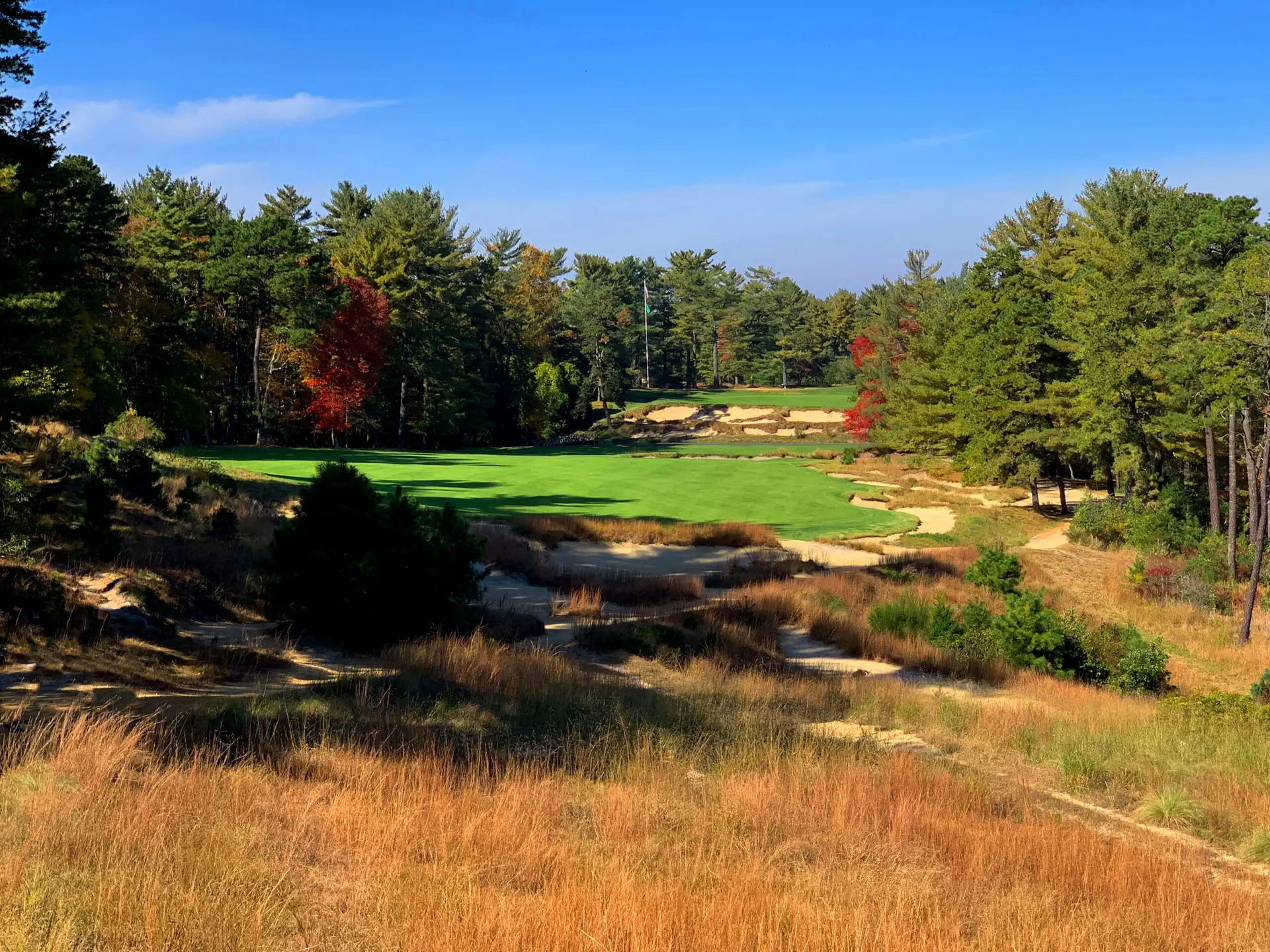
St. Andrews (Old Course) (LINKS 100 ranking: 5)
356 yards, par four
By most design textbooks, there is little to suggest anything approaching greatness on the hole known as “Tom Morris.” Drivable by many, it’s one of the easiest on the course, with a football field for a landing area, a green only slightly smaller, and nary a bunker. For sheer atmosphere, however, there’s no greater finishing hole. From the Swilcan Bridge at the tee, the Royal & Ancient clubhouse in the background, and the vibrant Auld Grey Toun flush to the right, the setting crackles with the echoes of history. A public footpath that bisects the fairway 125 yards from the green, “Granny Clark’s Wynd,” is in play—no free drop. The front-left portion of the green complex, the “Valley of Sin,” can induce short-game psychoses. With tourists and townies watching your every move, the pressure of playing the 18th can shake the steadiest among us.

Sand Hills (LINKS 100 ranking: 7)
467 yards, par four
A little more than three decades into its existence, golf’s ultimate Field of Dreams (“If you build it, they will come”) continues to top the modern course rankings, due in part to its stellar trio of closing holes. The 18th is a stunning capper from Bill Coore and Ben Crenshaw. The hole climbs uphill around a gigantic blowout bunker to the left before concluding with an elevated, amphitheater green. The right-to-left tilt of the putting surface rewards players approaching from the left side of the fairway, but golfers who aim for that garden spot risk finding sand and rough trouble from an overcooked draw.

Pebble Beach (LINKS 100 ranking: 15)
541 yards, par five
There may be tougher, or even more dramatic finishing holes in golf, but none gets the pulse racing like Pebble’s. Arcing to the left along Carmel Bay, Pebble Beach’s 18th is a better hole today than it was for many decades, because modern equipment has allowed the majority of bold hitters to challenge the green in two. Tree trouble in the center of the landing area, giant bunkers, out-of-bounds stakes to the right, and the crashing waves of the Pacific are the main hurdles off the tee. The second shot offers similar dilemmas. While the beauty is overwhelming, the strategy is what elevates the hole, thanks to its simple risk/reward sensibility: How close to the water’s edge do you dare to play?
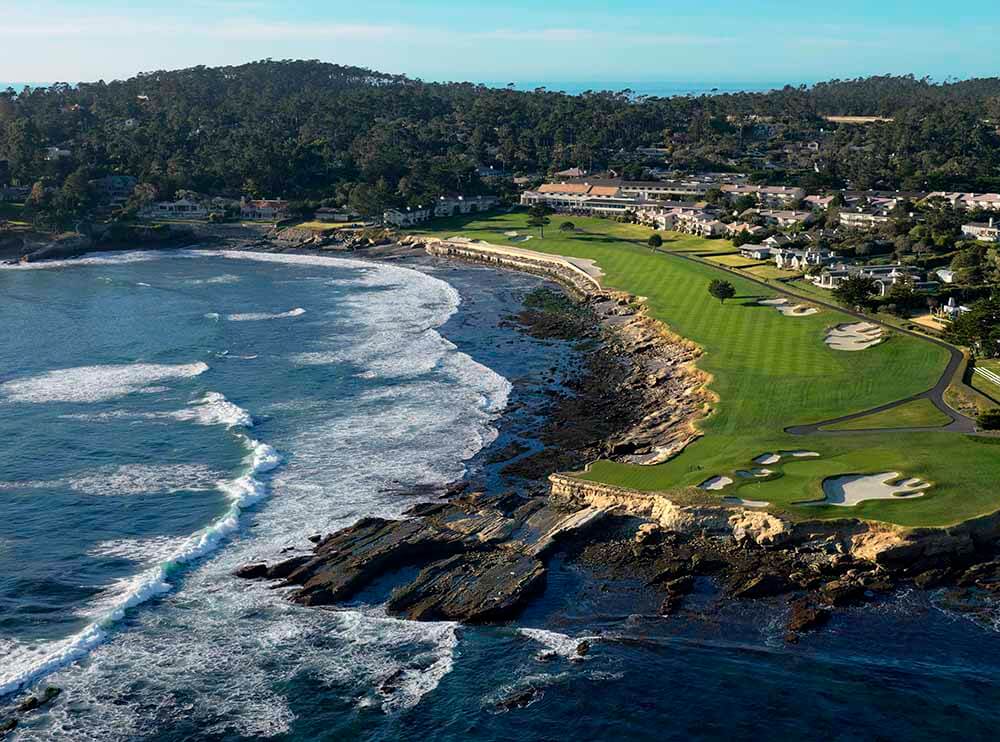
Oakmont (LINKS 100 ranking: 16)
502 yards, par four
Host to 10 U.S. Opens, the gold standard of tough championship golf may possess “all the charm of a sock to the head,” as Gene Sarazen put it, but Oakmont is endlessly fair and relentlessly interesting. The 18th embodies Oakmont’s best and most frightening attributes. A precise drive is required to avoid five staggered bunkers and dense rough, though a draw might be even more effective to hold the left-to-right sloping fairway. A boldly contoured green, perched on a small rise and sloped from back to front, makes the second shot as challenging as the first. A diagonally placed cross-bunker well short of the green plays havoc with depth perception and also catches plenty of second shots after an errant drive. Beyond the green sits the iconic green-and-white clubhouse, which sets any golfer to thinking not only about more than a century of impossibly firm, fast greens, but also memories of Nicklaus over Palmer in ’62, Arnie’s emotional U.S. Open goodbye in ’94, and now J.J. Spaun knocking down that cross-country putt in 2025.
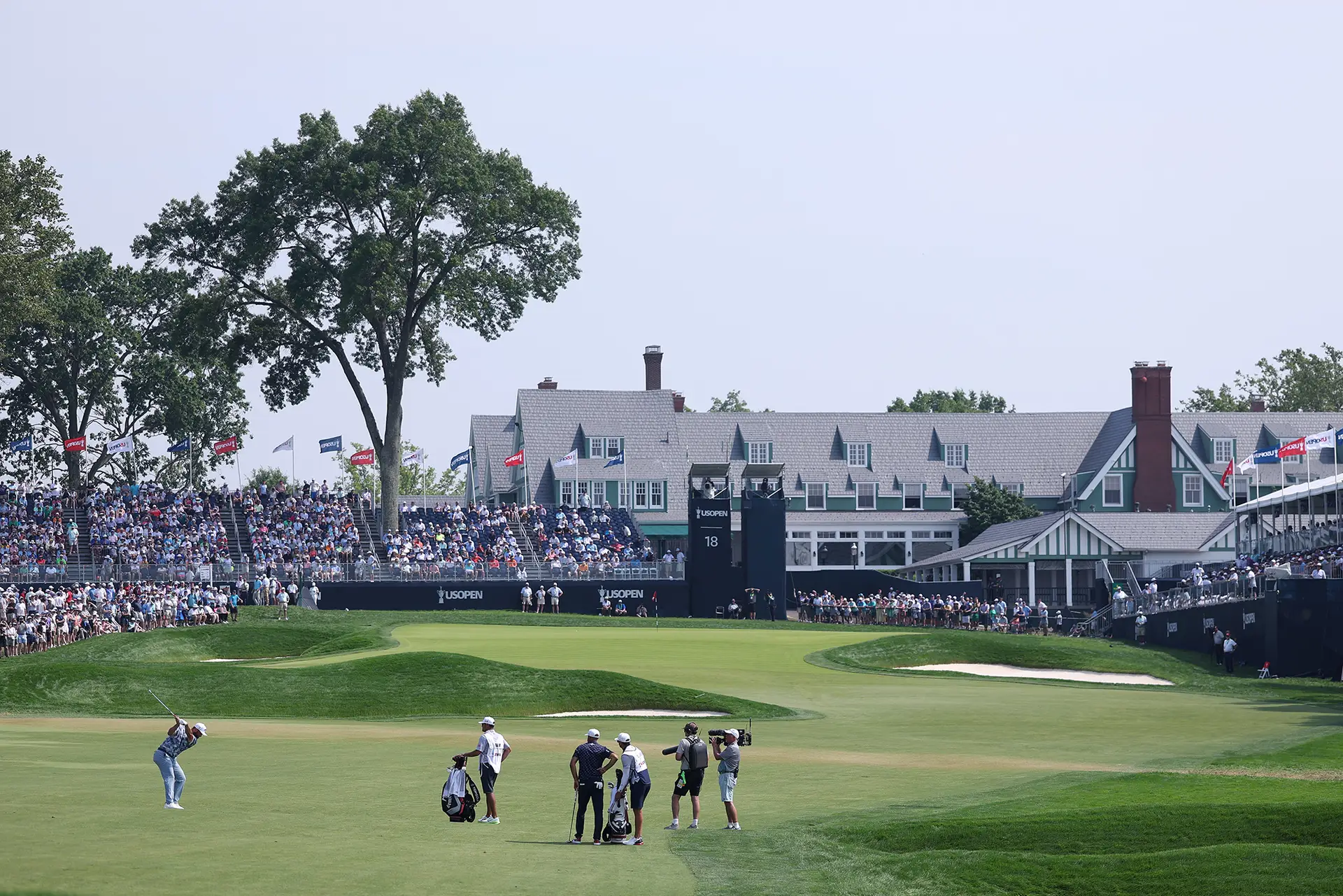
Merion (East) (LINKS 100 ranking: 18)
521 yards, par four
Ben Hogan executed one of history’s most famous shots here during the fourth round of the 1950 U.S. Open, when he fired a 1-iron approach to the green that finished 40 feet from the cup. His subsequent two-putt earned him a playoff—which he won—an incredible feat considering an auto accident nearly took his life the year before. Yet, even without Hogan’s heroics, Merion’s 18th would be legendary. A right-to-left sloping fairway with OB left and a domed green at the crest of an upslope with a valley in front form the bulk of the challenge. A putting surface that falls away from front to back for the first two-thirds, then back to front for the final third, form the balance of the task at hand.

Cape Wickham (LINKS 100 ranking: 27)
433 yards, par four
American architect Mike DeVries teamed with Australian Darius Oliver to create the pulse-racing Cape Wickham layout on Australia’s King Island, between Tasmania and Melbourne, in 2015. Highlights include eight holes alongside Bass Strait, a lighthouse in view at holes 14 through 18, and huge sand dunes and ridges affecting play. The final jewel in a gem-filled crown is the dogleg-right 18th, a “Cape”-style hole that demands a bite-off-as-much-as-you-dare drive over Victoria Cove and its vast beach. Slicers beware—the beach sand is in play.

Winged Foot (West) (LINKS 100 ranking: 34)
469 yards, par four
It’s easy to overlook the merits of this hole if only because it’s been home to such a surplus of legendary lore. Bobby Jones drained a 12-footer here to earn a U.S. Open playoff in 1929. Fuzzy Zoeller waved the white flag at Greg Norman before winning the 1984 U.S. Open. Davis Love III tipped his visor to a rainbow at the 1997 PGA. Phil Mickelson tempted fate and lost the U.S. Open in 2006. The list goes on. Yet, the hole’s setting and design traits are precisely what have precipitated such memorable moments. A crisp draw is preferred off the tee on this dogleg left, but anything too far left faces arboreal dread, as Mickelson discovered in ‘06. A slightly elevated green demands a near-perfect approach thanks to its confounding contours—a huge false front, ledges front-left and back-left, and a pronounced slope from the back of the green to the center. All of this is backdropped by one of the most distinctive clubhouses in golf.
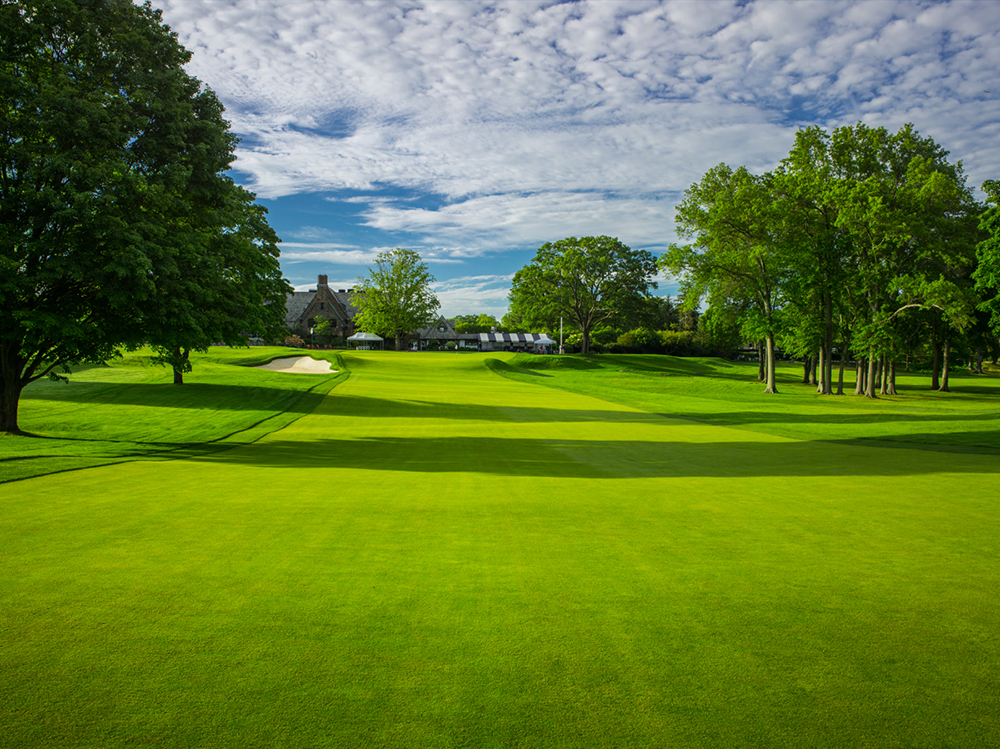
TPC Sawgrass (Players Stadium) (LINKS 100 ranking: 41)
462 yards, par four
The banana-shaped 18th looks nearly as intimidating—but plays much harder—as its pint-size, island-green predecessor. The hole favors a drive down the left side to achieve the best angle to approach the green, but the further left you go, the greater the risk of splashing into a huge lake. Adding to the discomfort are the railroad ties that form a sharp edge to the lake which creates an intimidation factor that exceeds the actual danger. The “safe” drive to the right leaves a lengthy approach from a poor angle, or worse, can scamper into the trees. The hole looks mean and plays meaner.

Harbour Town (LINKS 100 ranking: 70)
472 yards, par four
Don’t let the flat, double-wide fairway fool you. With OB stakes, trees, and condos to the right, and Calibogue Sound to the left, any wind at all turns this early Pete Dye design into a beautiful beast. A large, flat green is protected by a large, flat, fronting bunker. The safe miss is hole-high right, but it’s tough to summon the moxie to attack the pin from there, given that sea marsh lurks just beyond the putting surface. Of course, as archetypal landmarks go, few can compare with the candy cane-striped lighthouse that backdrops the green, along with a yacht-filled marina. Following in the footsteps of past champions Arnold Palmer, Jack Nicklaus, and Davis Love III further hikes the must-play element. With a design that doesn’t overly favor one type of player, it is a formidable finisher.
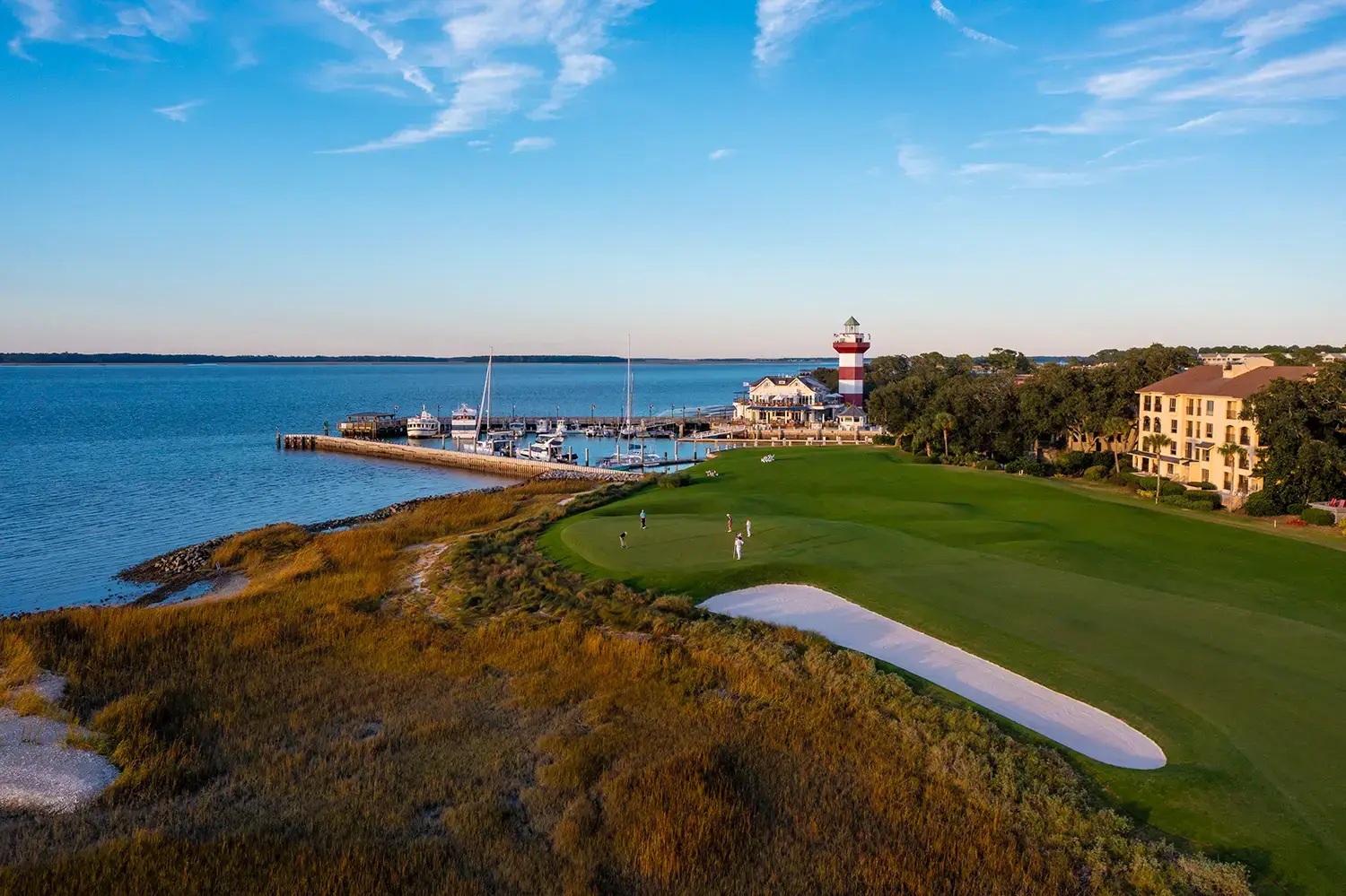





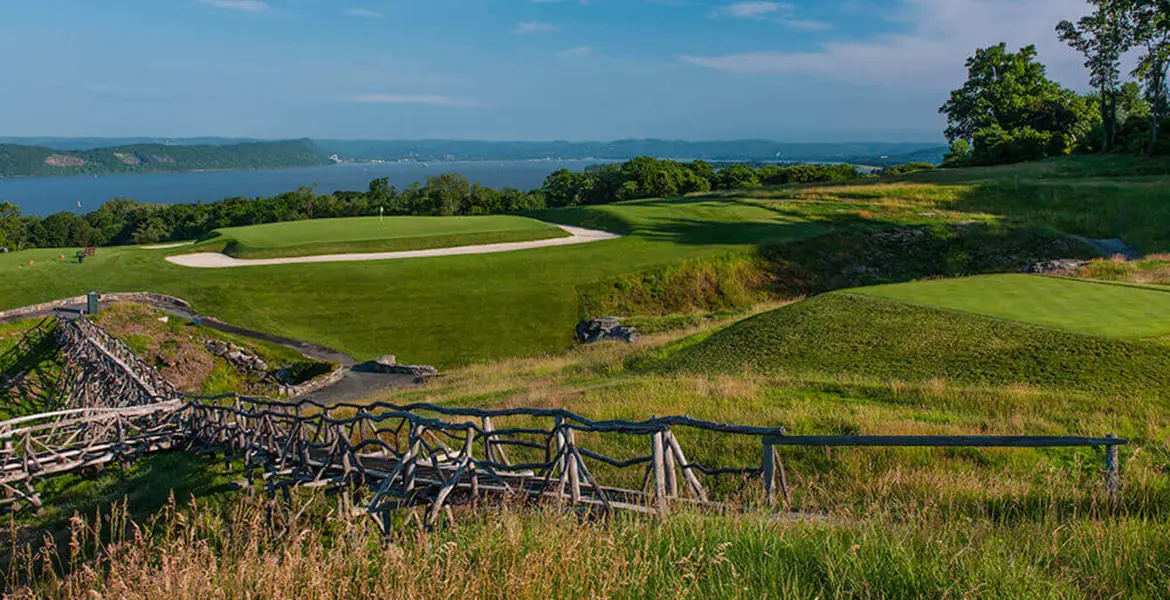
#9 Highland Links Cape Cod Mass very short par 3 , deep pot bunker in front of the two level green. Both levels sloping severely left. Good thing the green was cut at a quarter inch.
I told my group that I was going to aim for the upper level. I was a hair short, my ball had made a hell of a divit in the green that kinda looked like a ballmark .
I had to hit a wad of mud because I laid through the green. I played a 8’ break it was the wobbliest putt I ever saw.
There are 4-5 fantastic holes and overall an awesome experience.
18 at National Golf Links of America 100% should be on this list